To reach the Chimney Tops trailhead from Gatlinburg, Tennessee, take Newfound Gap road into the park. Newfound Gap road is the only road which completely traverses the Great Smoky Mountain National Park, linking Cherokee NC to Gatlinburg TN. From the Sugarlands Visitor Center, continue 6.7 miles until you reach the parking lot at the Chimney Tops trailhead. The parking lot and trailhead is located between the lower tunnel and “the loop” on Newfound Gap road. If traveling from Cherokee to Chimney Tops, take the Newfound gap road twenty-two miles from Oconaluftee Visitor Center.
Once at the trailhead, there is plenty of room for parking, but the trail itself is sometimes a bit crowded due to its popularity. A tour bus in the parking lot means more people on the trail, so if you are looking for a back-to-nature experience along this trail, you may enjoy a hike to Chimney Tops during off-season. If so, beware of ice in really cold weather, as the trail is steep, rising 1,300 feet from the trailhead to the chimney-like pinnacles which give this trail its name. Ice tends to form early at the higher elevations of the Great Smoky Mountain National park. The highest point of Chimney Tops trail is 4,840 feet above sea level.
The Chimney Tops Trail begins at the low rock wall bordering the parking lot area. Here you will find Eastern hemlocks. The trail descends to a bridge across the Walker Camp Prong of the Little Pigeon River. In fact the trail crosses several bridges and tributaries along the one mile hike to Beech Flats. The second and third bridge both cross the Road Prong and guide the hikers on to the next landmark, Beech Flats Cove. This is approximately the half way mark of the trail. At Beech Flats, the Chimney Tops Trail crosses the Road Prong Trail that in turn leads to the Appalachian Trail at Indian gap 2.3 miles away. If your destination is Chimney Tops, you will want to stay on the main trail that veers right into a creek valley on the north side of Sugarland Mountain. This part of the trail cuts through an inspiring old growth forest, but beware of tree roots which have tripped many a hiker as they admired these old giants of the Smokies. At the top of the gulch, you’ll see one of the oldest yellow Buckeyes in the Park, and just beyond the Buckeye are two sharp switchbacks that take the hiker to the bottom of the Chimneys as they rise from Sugarland Mountain.
The upper end of Chimney Tops trail is not a graded trail as it was in the beginning. The upper end of the trail narrows to a smaller trail called a manway. Narrowing, the trail continues on quite a distance. At its steepest point, the manway becomes an arduous climb–especially if ice has formed on the trail. The terrain can be rugged in places.
Two miles into the hike, you will be able to see the chimneys themselves. Care should be taken as you follow the path to the right that leads to the top. Here you can see Mount Le Conte to the east, Mount Mingus to the south, and to the west, a steep wooded side of Sugarland Mountain. Injuries have occurred in this area, as there is a hole large enough to fall into, so take precautions to keep yourself and your loved ones safe.
Despite the obvious risks, even the upper end of Chimney Tops trail is worn smooth in places by the hoards of hikers willing to risk life and limb to experience “the chimneys”. Why? Adventure perhaps? Or perhaps the urge to explore the chimneys for themselves? Perhaps others go simply to be edified by the breathtaking views of the surrounding mountains, while others go to enjoy the abundant beauty of the old growth forest and flora to be found there. Whatever the reason, the popularity of this trail continues season after season.
There are many plants of interest along the length of Chimney Tops trail. Old Hemlocks grace its top, and flowering trees and shrubs dot it’s length. See how many you can recognize along your walk. To get you started, there is a large Fraser magnolia near the first bridge along this trail. Its blossoms are large, white and pretty hard to miss when in bloom in late April or early May.
Rhododendron is abundant along Chimney Tops trail. Also common are a variety of wildflowers. In Spring, you can find Trillium (right) and Hepaticas (left). In Summer, Joe-Pye weed, Bee-balm, and Jewelweed can be found. Violets, Toothworts, and Foamflowers also grow nearby. On the trail to the Chimneys people rave about the yellow buckeye trees due to the age of these trees and their unusual leaf structure and the flowers which appear in May. A trek to Chimney Tops will make you understand why it is so popular. You will probably want to return on your next visit to the Smokies–and get fit in the process!
Narrative and photo contributed by Jacqueline Thompson
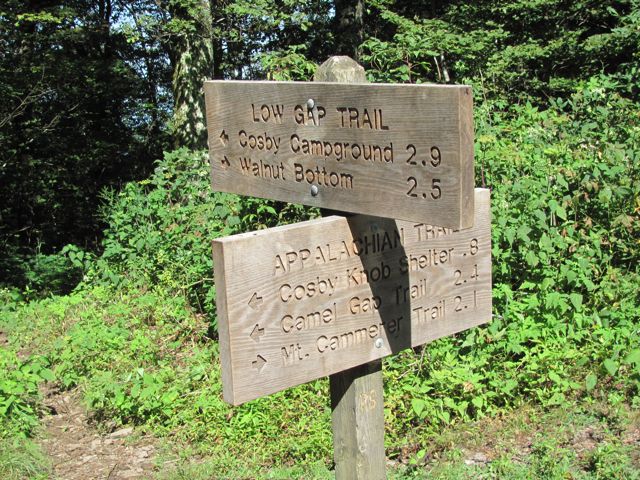
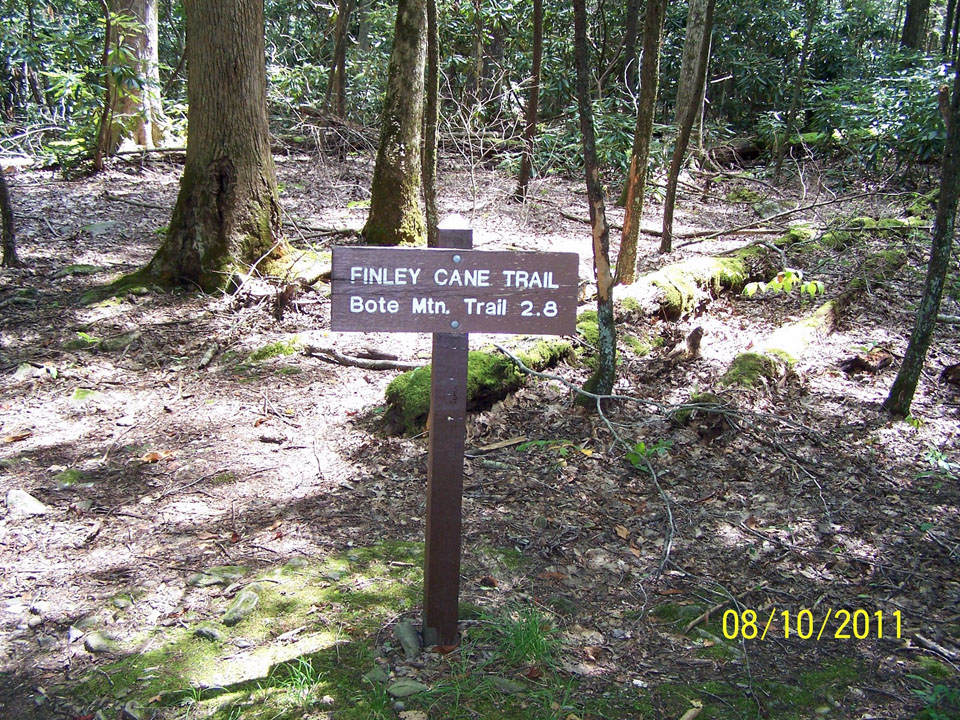

 Continuing on, the trail can be rather muddy at times before you cross another small spring branch and then begin the ascent up Bote Mountain. Rhododendron are especially prevalent here as well as other points on the trail as you’ll surely notice.
Continuing on, the trail can be rather muddy at times before you cross another small spring branch and then begin the ascent up Bote Mountain. Rhododendron are especially prevalent here as well as other points on the trail as you’ll surely notice.
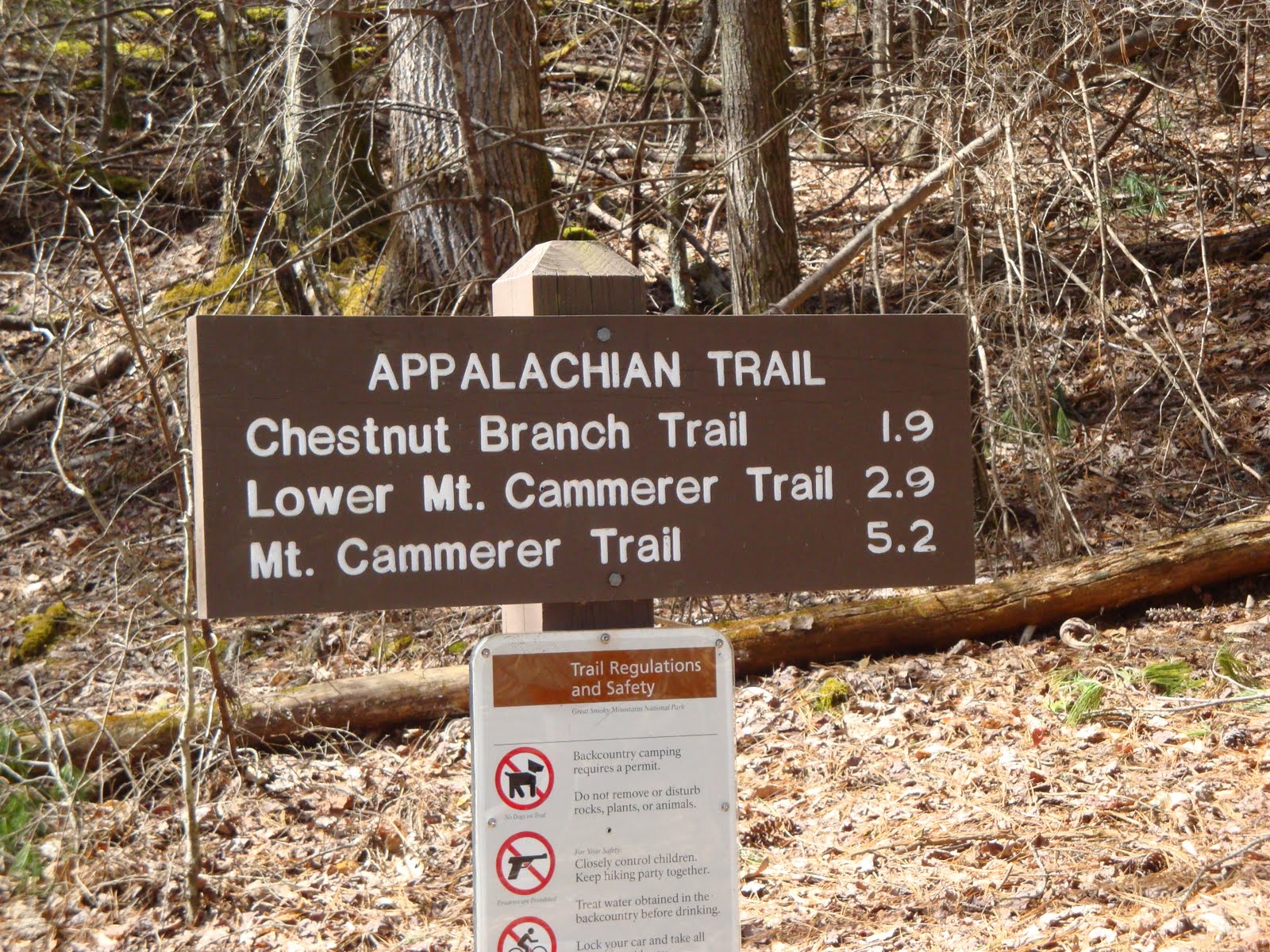
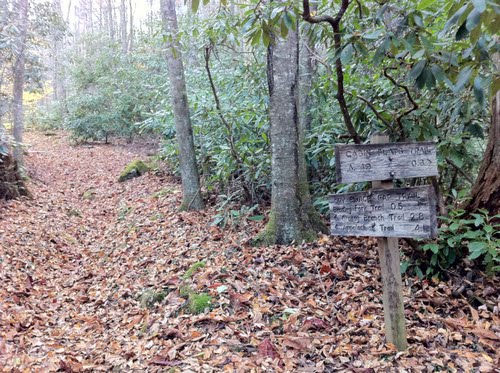
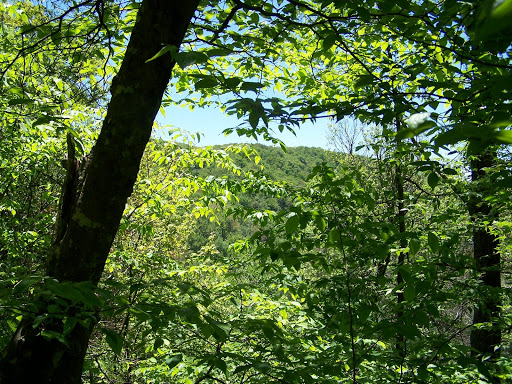
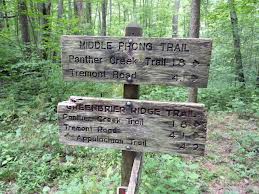
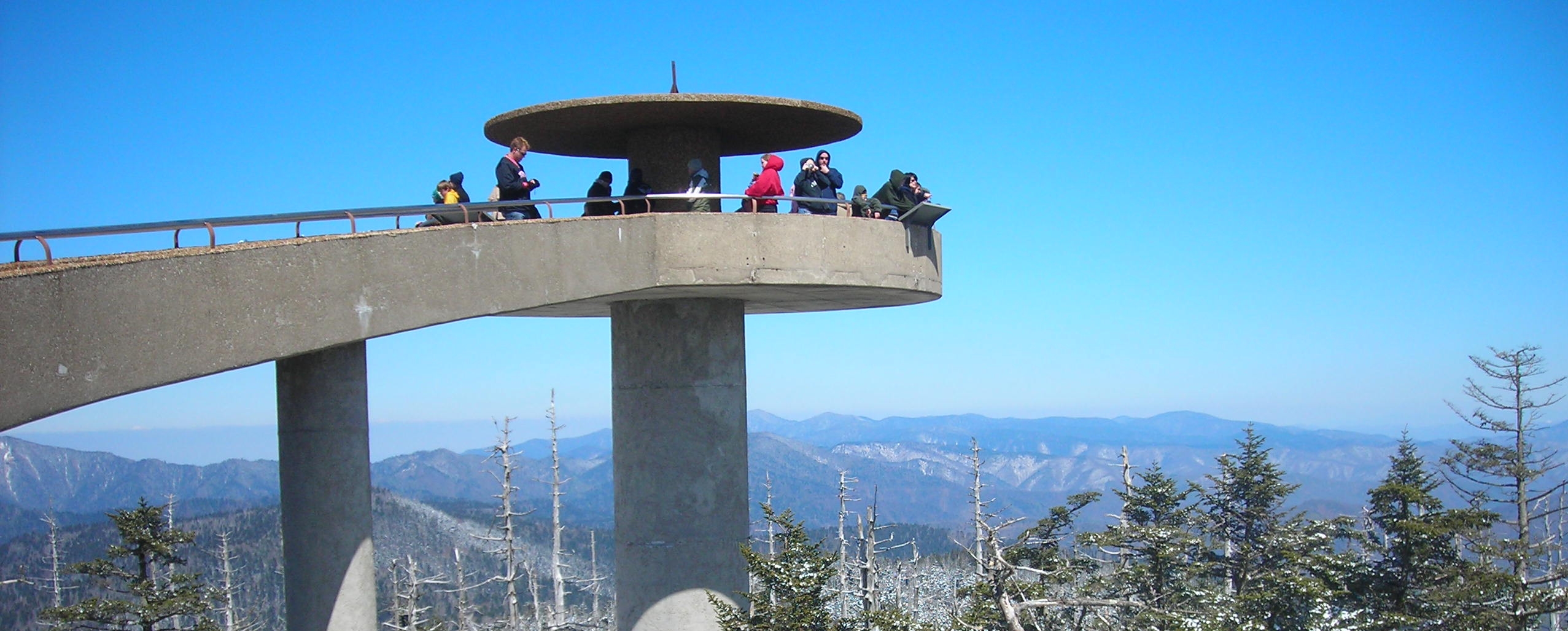
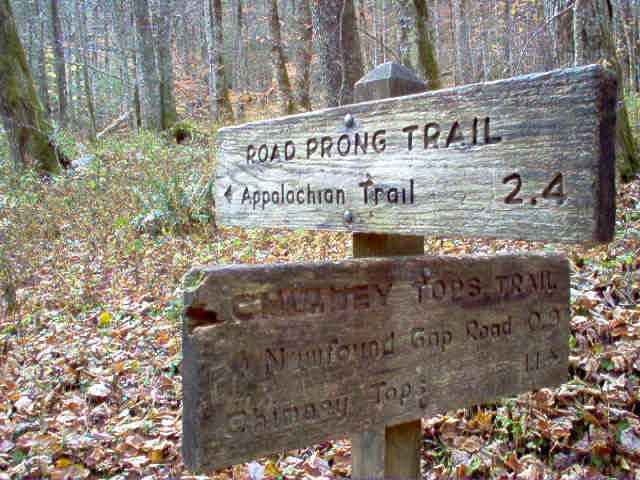
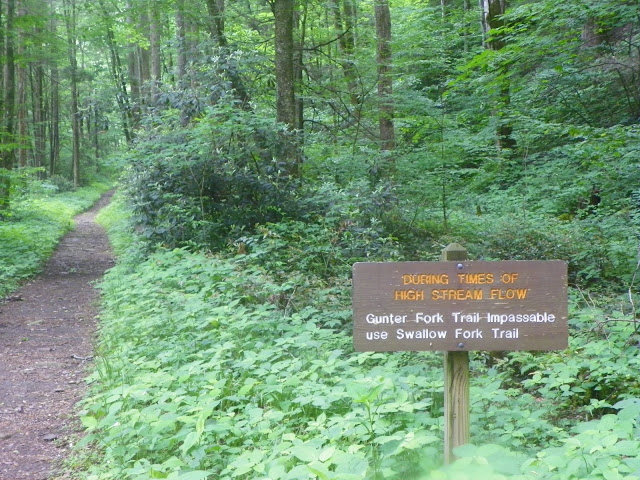
 When you look at the Gunter Fork Trail on a map, it can take you aback at the trail’s steep climb, but when you realize it’s only a 4.1 mile hike in the Smokies, it doesn’t seem that bad, even for the novice hiker.
When you look at the Gunter Fork Trail on a map, it can take you aback at the trail’s steep climb, but when you realize it’s only a 4.1 mile hike in the Smokies, it doesn’t seem that bad, even for the novice hiker.
 So where did that river come from? Its source is believed to stem from an underground lake found beneath English Mountain. Famous for its spring water, chert or flint can also be found on English Mountain, but in limited quantities. Indians once used both to form arrowheads, knives and scrapers to use for tribal hunting and battle. Calcite formations can still be found growing in the cave as well as other rare rock formations. English Mountain boasts the largest wall of rare cave onyx or dripstones known to exist anywhere.
So where did that river come from? Its source is believed to stem from an underground lake found beneath English Mountain. Famous for its spring water, chert or flint can also be found on English Mountain, but in limited quantities. Indians once used both to form arrowheads, knives and scrapers to use for tribal hunting and battle. Calcite formations can still be found growing in the cave as well as other rare rock formations. English Mountain boasts the largest wall of rare cave onyx or dripstones known to exist anywhere.